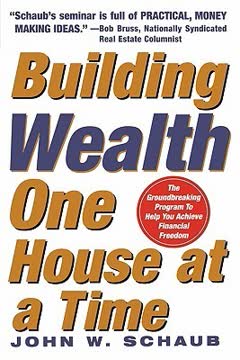Key Takeaways
1. Houses: Your Best Bet for Building Wealth
Houses make me more money with less work than any other investment.
Houses vs. Other Investments. Single-family homes offer a unique blend of profitability and manageability compared to apartments or commercial properties. Houses provide rental income and appreciate in value, and their value doesn't solely depend on rental income. Unlike commercial properties, houses attract tenants who need housing more than they need to negotiate, giving you the upper hand.
Predictable Performance. Houses have a long history of increasing in value, averaging roughly 5% annually. While there are fluctuations, well-located houses rarely drop significantly in price. This predictability makes them a safer investment, especially when bought at a discount.
Community Impact. Investing in houses allows you to help people by providing affordable housing, relieving sellers of burdens, and helping families buy their first homes. This creates a positive reputation and fosters referrals, further boosting your business.
2. Target the Right House and Neighborhood
Not all houses are created equal.
Strategic Diversification. Owning different houses in various neighborhoods allows for diversification, mitigating risk. Some houses will produce more cash flow, while others will appreciate more rapidly. Diversifying by size, age, and price range creates a safer portfolio than owning a single large property.
Neighborhood Matters. Buyers and tenants are drawn to quiet, safe, well-maintained neighborhoods populated by responsible people. Proximity to good schools, hospitals, and transportation also significantly impacts desirability and value. Investing in the best neighborhood you can afford will yield higher returns.
Right-Sized for Success. Aim for three-bedroom, two-bath houses, as they appeal to a broader range of tenants and buyers. Garages, basements, and fenced yards are also highly desirable features. Focus on functional and well-located properties, avoiding high-maintenance frills like pools or elaborate landscaping.
3. Finding Undervalued Properties: The Art of the Deal
When you can identify a house that an owner wants to sell and that is not listed, you have less competition from other buyers.
Unlisted Opportunities. The best deals are often found off-market, where there is less competition. Focus on empty houses, properties needing work, and those owned by out-of-town landlords. These situations often indicate motivated sellers willing to negotiate.
Questioning is Key. Before investing time and energy, ask potential sellers targeted questions to gauge their motivation and the property's potential. Inquire about their reason for selling, loan balances, and willingness to rent if they can't sell. This helps identify the most promising opportunities.
Motivation and Profitability. Rank both the seller's motivation and the potential profitability of the house on a scale of 1 to 10. This allows for direct comparison of multiple properties and helps prioritize the most promising deals.
4. Financing First: Know Your Numbers Before You Offer
You do not set the rent on a house; the market sets your rent.
Market Rent Research. Conduct a thorough rent survey of competing landlords to determine the amount of rent you can expect to collect. Analyze classified ads, call landlords, and visit properties to understand the market dynamics and identify opportunities.
Rent and Price Cycles. Understand that rents and prices tend to move inversely, with rents rising when prices are flat and vice versa. This is influenced by interest rates and credit availability. Recognizing these cycles helps you anticipate market trends and make informed decisions.
Cash Flow Projections. Project the income and expenses of a potential investment property to determine its cash flow. Factor in property taxes, insurance, maintenance, and potential vacancies. Use this information to calculate how much you can afford to borrow and repay with the net rents.
5. Crafting Offers That Win: Negotiation Essentials
Don't tell me what you won't do; tell me what you will do.
Understanding Seller Motivation. Before making an offer, understand the seller's motivation for selling. This provides valuable insight into their needs and priorities, allowing you to tailor your offer accordingly.
Start with Their Contract. If the seller has a contract, use it. This demonstrates cooperation and can streamline the process. Negotiate smaller items first, such as personal property and closing dates, to build momentum and establish a positive rapport.
Schaub's 10/10/10 Rule. A guideline for making offers: no more than 10% down payment, no more than 10% interest, and buy at least 10% below market value. This ensures a profitable and sustainable investment.
6. Leverage Creatively: Borrowing Beyond the Bank
The terms you get on the money you borrow are more important when you borrow the entire amount than when you buy with less leverage.
Beyond Traditional Lending. Explore alternative financing options beyond banks, such as seller financing, private investors, and other creative strategies. These sources often offer more flexible terms and can be crucial for acquiring properties with limited capital.
Seller Financing. Sellers may be willing to finance the purchase, especially if they have a large profit and want to defer taxes. This can involve taking over existing loan payments or structuring a new note with favorable terms.
Investor Partnerships. Partner with investors who have capital but lack the time or expertise to manage properties. Structure agreements that split profits fairly, allowing you to leverage their resources and build your portfolio.
7. Mastering Contracts: Loopholes and Legal Safeguards
Only sign a contract that you have had time to read carefully and fully understand.
Understand the Fine Print. Take the time to thoroughly read and understand any real estate contract before signing. Pay close attention to clauses related to inspections, closing costs, and specific performance.
The Inspection Loophole. Include an inspection clause that allows you to unilaterally cancel the contract if you are not satisfied with the results. This provides a safety net in case you discover undisclosed problems with the property.
Protect Your Deposit. Make your earnest money deposit payable to an attorney or title company, not directly to the seller. This provides added security and ensures that the funds are held in escrow.
8. Negotiate Like a Pro: Strategies for Success
Negotiating has a bad reputation. It is not the art of taking advantage of someone else. It is the art of putting a deal together.
Fairness is Key. Aim for win-win negotiations where both parties benefit. One-sided deals often fall apart before closing. Focus on building relationships and finding solutions that meet everyone's needs.
Let the Seller Speak First. Allow the seller to set their price before making an offer. This provides valuable information about their expectations and allows you to gauge their willingness to negotiate.
The Power of Silence. Silence can be a powerful tool in negotiation. After making an offer, remain silent and allow the seller to respond. This can create pressure and encourage them to make concessions.
9. Agents: Allies in Your Real Estate Journey
The best deals I have ever made have been brought to me by agents.
Cultivate Agent Relationships. Build relationships with real estate agents and train them to identify properties that meet your investment criteria. Offer incentives for bringing you good deals, such as guaranteed offers and quick closings.
Commission Considerations. Be mindful of agent commissions when structuring offers. Ensure that there is enough equity in the deal to compensate the agent fairly.
Agent as Investor. Consider selling properties to agents on lease options, allowing them to fix up and resell the property while generating income for you.
10. Cash Flow Now: Buying and Selling for Immediate Profit
Buying at a below-market price makes you a profit the day you buy.
Short-Term vs. Long-Term. Buying and selling houses for quick profits requires different skills and strategies than long-term investing. It demands a strong commitment of time and energy, as well as expertise in negotiation and renovation.
Profitability Formula. Your annual profit depends on how far below market you buy each house and how many houses you can buy and sell per year. Focus on maximizing both factors to achieve your financial goals.
The Right Properties. Target houses in high-demand price ranges and neighborhoods. Look for properties that need only minor repairs and can be quickly resold to owner-occupants.
11. Lease Options: Maximize Profits and Help Buyers
You can buy a house without a written contract. You cannot force someone to perform, however, if he changes his mind.
Retail Price, Creative Financing. Lease options allow you to sell properties at retail prices to buyers who may not qualify for traditional financing. This can significantly increase your profits while helping families achieve homeownership.
Qualify Your Buyers. Carefully screen potential lease option buyers to ensure they have a plan to qualify for a loan within the term of the contract. Provide guidance and support to help them achieve their goals.
Setting the Terms. The option payment, monthly rent, and sales price are all interconnected. Adjust these variables to attract qualified buyers while maximizing your overall profit.
12. Foreclosures: Opportunities and Cautions
Most great deals are made because the seller has a financial problem, so a house in foreclosure seems like an obvious opportunity for an investor.
Distress Signals. Foreclosures can present lucrative opportunities, but they also require specialized knowledge and careful due diligence. Look for properties in good neighborhoods with motivated sellers.
Ethical Considerations. Approach foreclosure buying with empathy and respect. Avoid high-pressure tactics and focus on providing solutions that benefit both you and the homeowner.
Lender Negotiations. Contact the lender to negotiate the terms of the loan. This may involve lowering the interest rate, forgiving back payments, or allowing for a loan assumption.
Last updated:
FAQ
1. What is "Building Wealth One House at a Time" by John W. Schaub about?
- Step-by-step real estate investing: The book provides a comprehensive, practical guide to building wealth through buying, renting, and selling single-family houses, one property at a time.
- Focus on ordinary investors: Schaub emphasizes that anyone, regardless of background or starting capital, can achieve financial independence by following his methods.
- Long-term wealth creation: The core message is to buy good houses, hold them for the long term, and let appreciation, rental income, and prudent leverage work in your favor.
- Ethical and community-minded investing: The author advocates for fair treatment of tenants and sellers, and highlights the positive impact investors can have on their communities.
2. Why should I read "Building Wealth One House at a Time" by John W. Schaub?
- Proven, accessible strategies: Schaub’s methods are based on decades of personal experience and have helped thousands of ordinary people become millionaires through real estate.
- Step-by-step actionable advice: The book breaks down the process into clear, manageable steps, making it suitable for beginners and experienced investors alike.
- Focus on minimizing risk: Schaub teaches how to buy safely, avoid over-leverage, and select properties that are likely to appreciate and attract good tenants.
- Emphasis on ethical investing: The book encourages building a reputation for fairness, which leads to more opportunities and long-term success.
3. What are the key takeaways from "Building Wealth One House at a Time"?
- Buy and hold strategy: Wealth is built by buying quality houses and holding them until they double in value, rather than flipping for quick profits.
- Leverage wisely: Use prudent leverage—borrowing on terms your tenants can repay—to maximize returns while minimizing risk.
- Focus on the right properties: Target well-located, right-sized houses in good neighborhoods that attract long-term, responsible tenants.
- Diversification and patience: Spread investments across different neighborhoods and price ranges, and be patient—time and compounding are your allies.
4. How does John W. Schaub’s method for building wealth with single-family houses work?
- One house at a time: Start by buying one house, renting it out, and learning the ropes before moving on to the next property.
- 10/10/10 rule: Schaub’s guideline is to put no more than 10% down, pay no more than 10% interest, and buy at least 10% below market value.
- Hold for appreciation: The strategy relies on holding properties long-term to benefit from appreciation, rental income, and principal paydown.
- Repeat and scale: As you gain experience and equity, continue acquiring more houses, using cash flow and appreciation to fund further purchases.
5. What makes single-family houses the best investment according to "Building Wealth One House at a Time"?
- Predictable performance: Houses have a long history of appreciating at about 5% per year and provide steady rental income.
- Lower risk and higher liquidity: Single-family homes require smaller investments, have more buyers, and are easier to sell than commercial properties.
- Better tenants and less management: Houses attract longer-term, more responsible tenants compared to apartments or commercial spaces.
- Flexible exit strategies: You can sell to owner-occupants at retail prices, often for all cash, or offer owner financing for higher returns.
6. How do I find and buy the right house for investment, according to John W. Schaub?
- Target good neighborhoods: Focus on safe, well-maintained, owner-occupied areas with good schools and amenities.
- Right-sized properties: Prefer three-bedroom, two-bath houses with garages or basements, which appeal to the largest pool of tenants.
- Avoid high-maintenance features: Steer clear of houses with pools, elaborate landscaping, or unusual layouts that require extra upkeep.
- Research and walk the area: Learn local values by walking neighborhoods, talking to neighbors, and tracking recent sales and rents.
7. What are the best ways to find good deals on investment houses, as described in "Building Wealth One House at a Time"?
- Look for motivated sellers: Seek out empty houses, properties needing work, out-of-town owners, and landlords tired of managing.
- Direct outreach: Knock on doors, call on ads, and send letters to owners who may need to sell quickly.
- Network with agents and lenders: Build relationships with real estate agents and lenders who can alert you to deals, especially during slow markets.
- Ask the right questions: Use Schaub’s list of probing questions to assess seller motivation and property profitability before making offers.
8. How does John W. Schaub recommend financing investment properties?
- Prefer long-term, fixed-rate loans: These provide predictable payments and allow you to benefit as rents rise over time.
- Creative financing: Use seller financing, private investors, or partnerships to avoid bank restrictions and access better terms.
- Leverage safely: Only borrow amounts that your tenants’ rent can comfortably cover, and avoid over-leveraging or risky short-term loans.
- Use the 10/10/10 rule: Limit your down payment and interest rate, and always buy below market to ensure positive cash flow and safety.
9. What are John W. Schaub’s tips for negotiating and making offers on houses?
- Let the seller speak first: Always try to get the seller to name their price and terms before making your offer.
- Ask for more than you need: Start negotiations by asking for more concessions, so you have room to compromise on what matters most.
- Insist on quick decisions: Don’t let sellers “shop” your offer; require acceptance or a counteroffer within a short time frame.
- Use contingencies and small deposits: Protect yourself with inspection and financing contingencies, and never give large deposits directly to sellers.
10. How does "Building Wealth One House at a Time" advise managing tenants and rental properties for long-term success?
- Attract quality tenants: Buy good houses in good neighborhoods, set fair rents, and require substantial security deposits.
- Screen thoroughly: Check income, employment, rental history, and references to ensure tenants can pay and will stay long-term.
- Set clear policies: Be consistent, firm, and fair in enforcing rules, collecting rent, and handling maintenance.
- Reward good behavior: Offer discounts for on-time payment and low maintenance requests, and treat long-term tenants well to minimize turnover.
11. What are the key strategies for selling houses and maximizing profits, according to John W. Schaub?
- Sell on lease/options: This allows you to sell at retail prices to buyers who need time to qualify for a loan, often generating higher profits.
- Know when to sell: Sell only when it fits your investment plan, such as when a property no longer meets your criteria or to fund other goals.
- Minimize selling costs: Selling directly or on lease/options can save on commissions and repairs, increasing your net profit.
- Use tax strategies: Consider tax-deferred exchanges (Section 1031) or installment sales to defer or reduce taxes on gains.
12. What are the most important concepts and quotes from "Building Wealth One House at a Time" by John W. Schaub?
- "Buy one, rent one, then and only then look for the next deal." – Emphasizes learning by doing and not overextending yourself.
- 10/10/10 rule: No more than 10% down, 10% interest, and buy at least 10% below market—ensures safety and profitability.
- "You make your money when you buy." – The importance of buying right, not relying on future appreciation alone.
- "Treat others as you would like to be treated." – Ethical investing leads to referrals, repeat business, and long-term success.
- "Making it big on little deals." – Wealth is built steadily, one house at a time, not through risky, high-stakes speculation.
Review Summary
Building Wealth One House At A Time receives mostly positive reviews, with readers praising its solid principles for beginners in real estate investing. The book's 10/10/10 rule and buy-and-hold strategy are highlighted as valuable concepts. Readers appreciate the comprehensive coverage of topics like finding deals, negotiating, and managing tenants. Some criticize outdated information and lack of detailed how-to guidance. Overall, reviewers find it informative and confidence-boosting for aspiring real estate investors, though some note its focus on the US market and single-family homes.
Similar Books
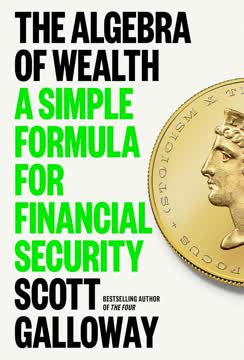
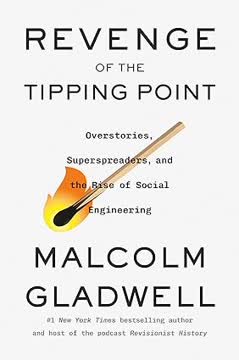
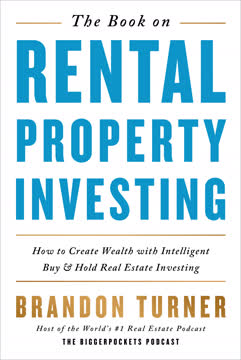
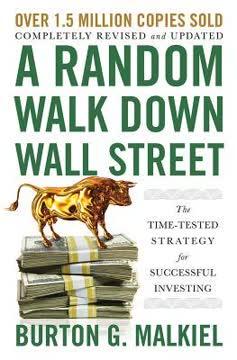
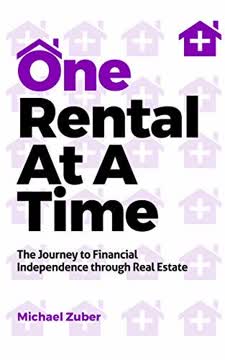

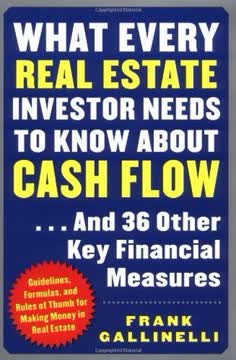
Download PDF
Download EPUB
.epub digital book format is ideal for reading ebooks on phones, tablets, and e-readers.
